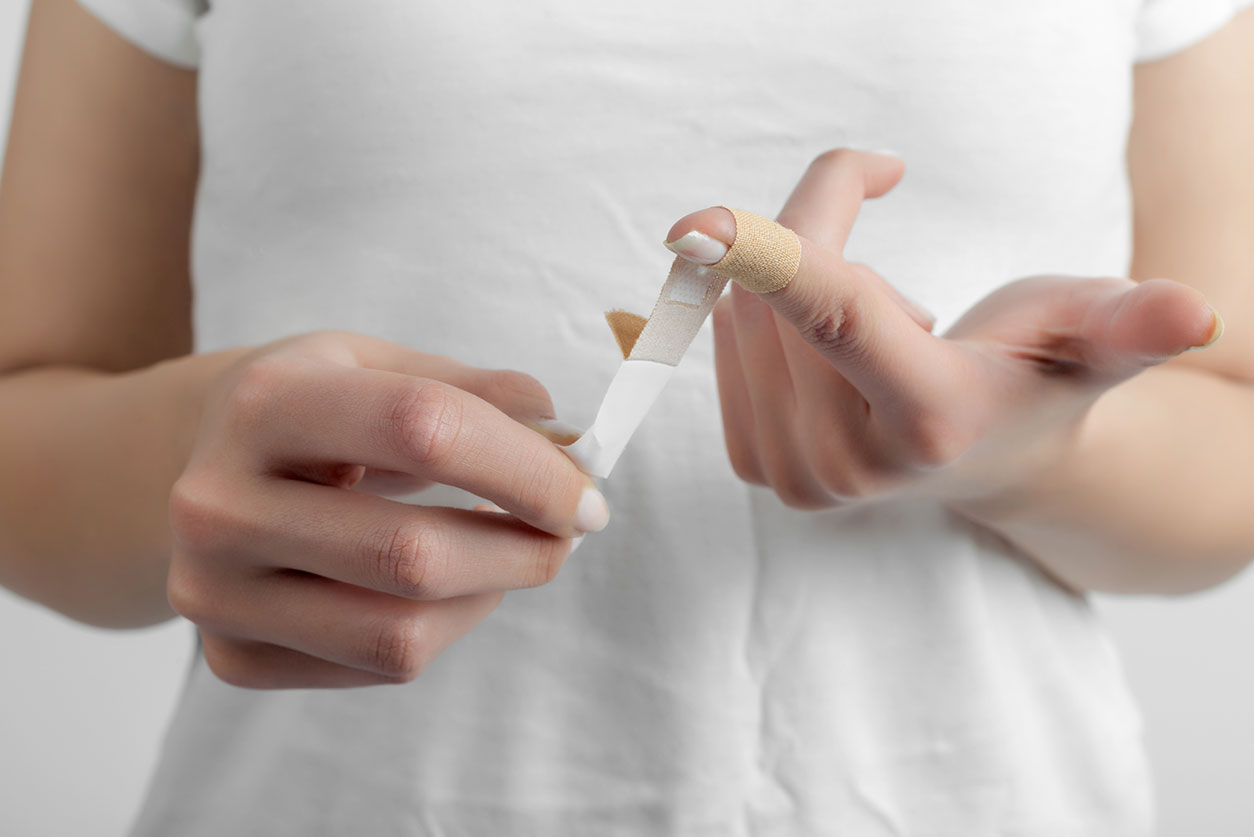Our fingers and nails are involved in every aspect of our daily activities. As such, they are more susceptible to injuries and infection than any other part of the body.
What are finger and nail injuries?
Finger and nail injuries are very common in daily life and occur when they are cut, crushed, pinched or sustain other trauma. These injuries are rarely serious and typically heal on their own without any specific treatment.
In some instances, though, pain, ongoing bleeding, infection, or loss of function require follow up by a medical provider.
Causes
When the fingernail bed is pinched, crushed, or cut, it can lead to severe pain and in some cases severe bleeding. Below are some of the common causes of finger and nail injuries:
- Cutting or slicing fruits and vegetables
- Accidents when using machinery
- Through crushing forces like slamming of a door on fingers or biting the nails
- Traumatic tearing and ripping of the nail from the nail bed
Symptoms
The most obvious symptoms are as follows:
- Redness or swelling around the cuticle area
- Restricted movement of fingers due to injury
- Deep ridges
- Loss of fingernail
- Stiffness or tingling sensation in nail or cuticle area
- Bruising under the nail
- Cuts and bleeding
- “Pus” or other material oozing from the wound
Treatment options
Minor finger and nail injuries do not require any treatment. In case of severe bleeding, infection, loss of function, or pain, treatment may be necessary. The healthcare professional will start examining the extent of injury by cleaning the wound so that they can get an exact idea of the severity of the finger or nail injury.
A finger or nail injury may lead to infection which then requires the healthcare professional to first drain the infected area (abscess) and then prescribe antibiotics to help resolve the infection.
If the cut or laceration is very deep then the medical provider may suture the wound to stop blood flow and promote healing
Surgery:
Surgery is done in extreme cases when the injury is followed by tendon or nerve damage or if there are bones that are severely out of alignment.
Follow-up care
After returning home, follow-up care is extremely important. In order to ensure a smooth recovery, the following things should be done:
- In case of suturing, stitches should be removed at the facility where they were placed. This is typically done within 10 to 14 days after injury
- Take antibiotics or pain-relieving medicines, if any, as instructed by your healthcare professionals
- Keep the wound dry and clean
- Do not soak your hand in the water for long
- Change your bandage as instructed.
Contact us
In case of urgent medical care assistance, AfterOurs Urgent Care offers immediate telemedicine services, where medical providers are available to offer assistance. Anyone who experiences signs and symptoms requiring urgent medical attention can simply book their appointment with AfterOurs Urgent Care to directly talk to an expert. If your medical issue is not appropriate for telemedicine, we will let you know and refer you to an in-person facility.
When to visit a doctor:
See a medical provider if your injury appears infected, will not stop bleeding, or if you are experiencing loss of function to the affected area.
Treatment for finger and nail injuries is available at AfterOurs Urgent Care.

